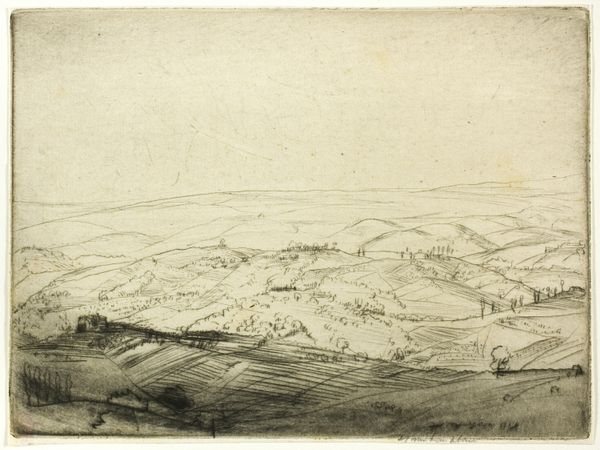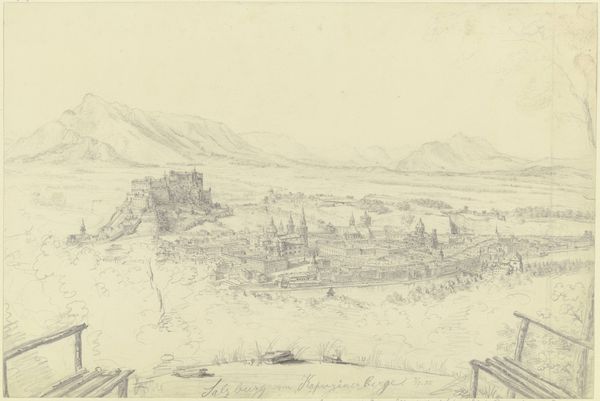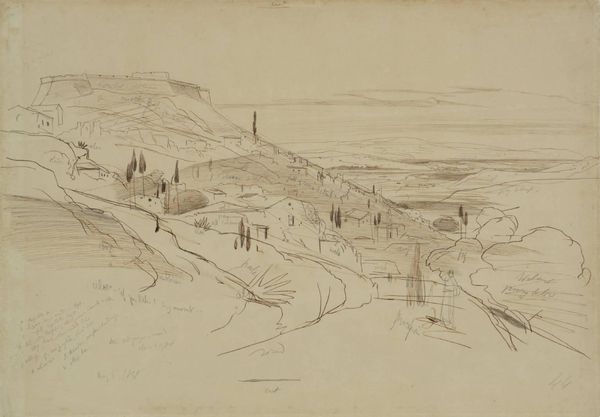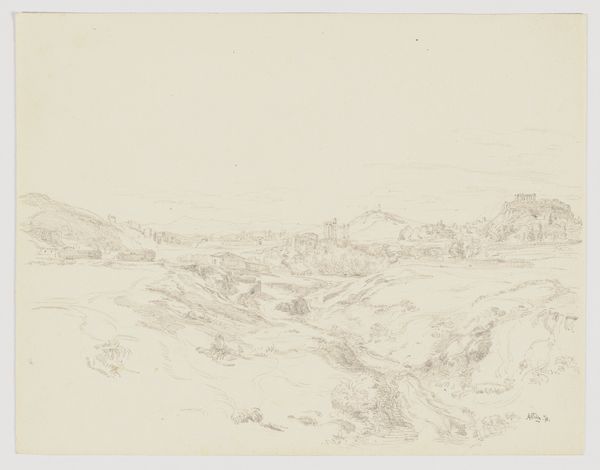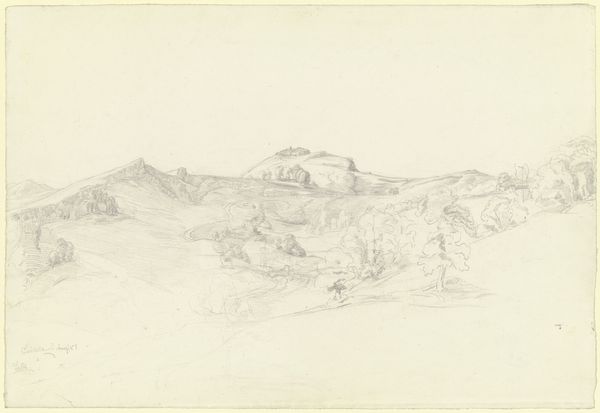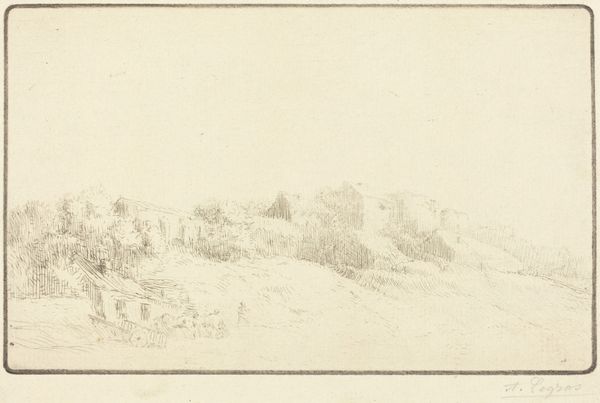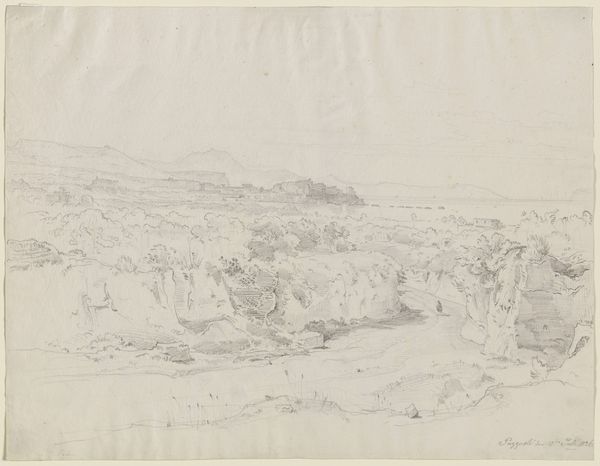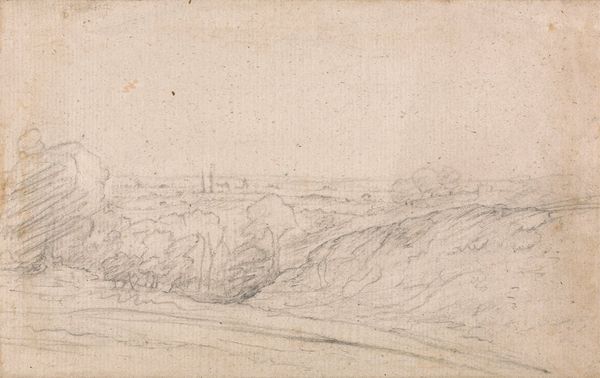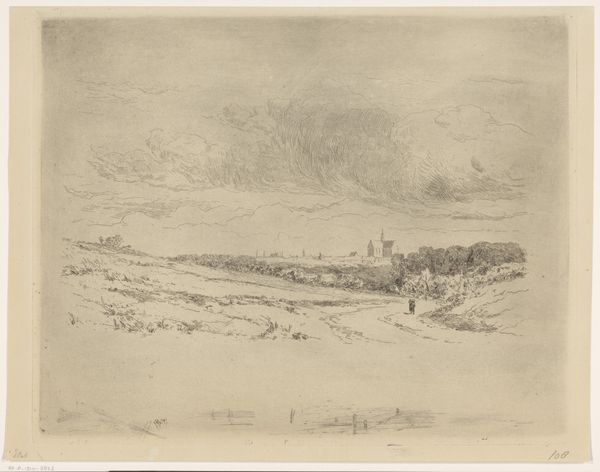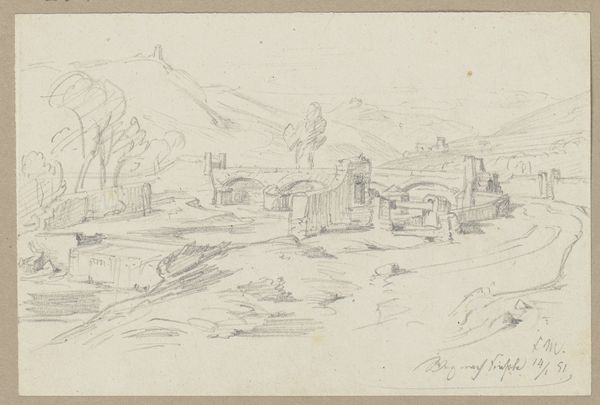
drawing, pencil
#
portrait
#
drawing
#
landscape
#
pencil
#
cityscape
#
academic-art
#
realism
Dimensions: Sheet: 5 11/16 x 8 15/16 in. (14.5 x 22.7cm)
Copyright: Public Domain
Editor: Here we have Camille Corot's "View of Nemi," a pencil drawing dating between 1826 and 1843, currently housed at the Metropolitan Museum of Art. The delicate lines give the entire landscape an ethereal, almost dreamlike quality. What historical context do you see reflected in this work? Curator: The ethereal quality you observe speaks directly to Corot's engagement with the changing status of landscape in the 19th century. Travel became increasingly accessible to the bourgeois class, creating a demand for views like this. But beyond being a mere travel sketch, Corot subtly elevates this “view” to the level of serious art. How do you think he manages to do that, beyond the delicate lines? Editor: Perhaps it's the almost topographical precision of the architecture, or maybe how the dramatic shadow adds depth to what could be just a flat rendering? It doesn't feel as picturesque or idealized as other landscape drawings from the same period. Curator: Precisely. The very act of meticulously documenting this specific locale—Nemi—is a political statement, rejecting grand, fictionalized landscapes for the real world. Notice how the inclusion of the built environment acknowledges the interplay between human development and the natural world. Do you see this as celebratory or critical of human intervention? Editor: It’s interesting, because while there’s a certain respect given to the architectural detail, the loose strokes used in the vegetation, the natural landscape, is not to be outdone by the human presence of buildings in this landscape! Perhaps Corot shows humans as existing "within", and not "above", Nature? Curator: A compelling observation. And consider this: Corot wasn’t just depicting a pretty scene; he was participating in the growing discourse around nature and industrialization, albeit subtly. Think of the museums where pieces like this are seen - even that contributes to the meaning and power in this era! Editor: It's amazing how much a simple pencil sketch can reveal about the social and political landscape of its time. Thank you! Curator: Indeed. Looking closely and asking about historical implications can really reshape our understanding.
Comments
No comments
Be the first to comment and join the conversation on the ultimate creative platform.
